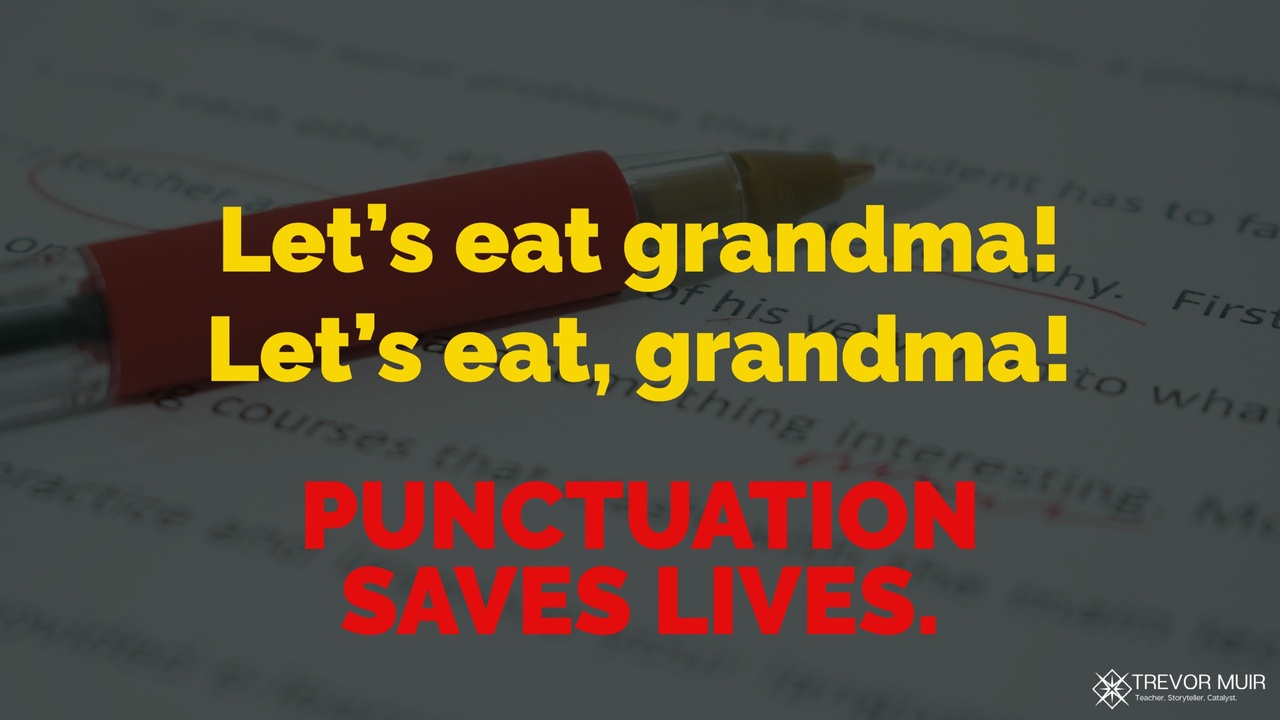
Helping Students See the Importance of Proper Grammar
Feb 09, 2023Few people have found ways to make learning about independent clauses and the correct uses of commas compelling. Instagram, Twitter, and texting have made proper punctuation seem like a chore, something English teachers make you do. I still use my memories from 9th grade learning about indefinite articles to put myself to sleep at night. And all of the teacher-speeches about how knowing proper grammar to write professional emails will come in handy, isn’t enough to make grammar engaging for students. Not even the promise of a strong quiz grade is enough to compensate for the tedious work of learning grammar, or as I like to call it, the algebra of English class.
So here’s the problem: proper grammar is still essential (just like math skills). We need to communicate clearly, avoiding ambiguity in our writing, and proper grammar helps us do that. However, the weight of that fact doesn’t exactly make sitting through a grammar lesson worthwhile. Instead, teachers can employ a tool that is scientifically proven to enhance student engagement to make grammar engaging for students: authenticity.
Help students see the need for proper grammar.
My students once interviewed World War 2 veterans and created documentaries with the footage. They created beautiful videos that were screened in front of the entire community at a local theater. I had the students create subtitles for the videos so everyone could understand what the vets were saying.
 But in my first year of doing the project, I didn’t screen the videos with the subtitles prior to the event.
But in my first year of doing the project, I didn’t screen the videos with the subtitles prior to the event.
That was a mistake.
In front of hundreds of people, veteran’s names were misspelled, the word YOU was spelled with just the letter U, and God forbid my students cared to use the correct form of ‘their.’
Following the event, everyone praised my students for their work, but person after person came up to me and said things like, “Great work, but man you need to teach those kids how to spell and use grammar.”
I was mortified. Despite how great their films were, the poor grammar in the subtitles distracted everyone from the work. My students saw live in the flesh how grammar actually serves a vital purpose. And I discovered that the next time I did a project like this I need to incorporate my grammar unit.
Make grammar engaging with authentic tasks.
The following year during that project, I built in grammar lessons, telling students that the subtitles in their films would be seen by hundreds of people, and that their use of syntax and punctuation would need to be perfect. My instruction for teaching grammar was the same, but now it had a purpose, and students paid much closer attention because their grammar was leaving the walls of our classroom (and their gradebook).
When students see there is a real need for proper grammar, their attention is heightened because the stakes are higher. For a 9th grade class, I had content standards about writing narratives and short stories. So instead of just writing the stories as an assignment, I had my students create children’s books that we brought to a local elementary school to read to younger kids. I stressed to my students the need for proper spelling and grammar because elementary students will be quick to point out errors. And that is exactly what happened.
One year, I didn’t screen all of the books as well as I should have before visiting the elementary class, and one of my students didn’t capitalize their “I’s. There wasn’t a third grader in the room who didn’t notice (or point it out).
It turns out, third grade is about the time students start learning capitalization, and the skill was fresh on those kids’ minds. Suddenly, my students learned that grammar is not just a rule that has to be followed for the sake of following, but a means to ensuring that you are not distracting your audience from your work. Of course the student’s book with the i’s and u’s was still readable, but it wasn’t polished, and that is all the audience could think about.
Project Based Learning and Grammar
Simply telling students this fact isn’t enough. They need to be shown the value of using correct punctuation and spelling words correctly. Project Based Learning lends to this task well. When teachers heighten the gravity of the work students complete in class, there is almost always heightened engagement. This doesn’t mean teachers have to abandon the practices and lessons they already have, especially in teaching grammar. Those worksheets and direct instruction still have plenty of merit. Instead, they’re giving meaning for that work. They’re turning spelling tests from busy-work into meaningful assignments to prepare for an important presentation.
When teaching compound and simple sentences, I’ve called local businesses to see if there are any marketing materials my students can help create. For proper punctuation, we’ve sent letters to elected officials petitioning for certain causes students are passionate about.
And for capitalization and comma usage, we create documentaries, and make sure the subtitles for them are perfect.
In the midst of all of these projects, I still stand in front a whiteboard at times and drill age-old rules into the minds of students who aren’t invigorated by grammar. However, they are energized by creating authentic work, and so in turn do better on grammar quizzes.
For more on Project Based Learning, check out my new course, The Project Based Learning Master Class.
Stay Connected With Trevor's Work
Join thousands of educators who receive weekly articles, videos, and inspiration from Trevor.
SPAM is the worst. I promise to only send you my best stuff and NEVER to share your email.

